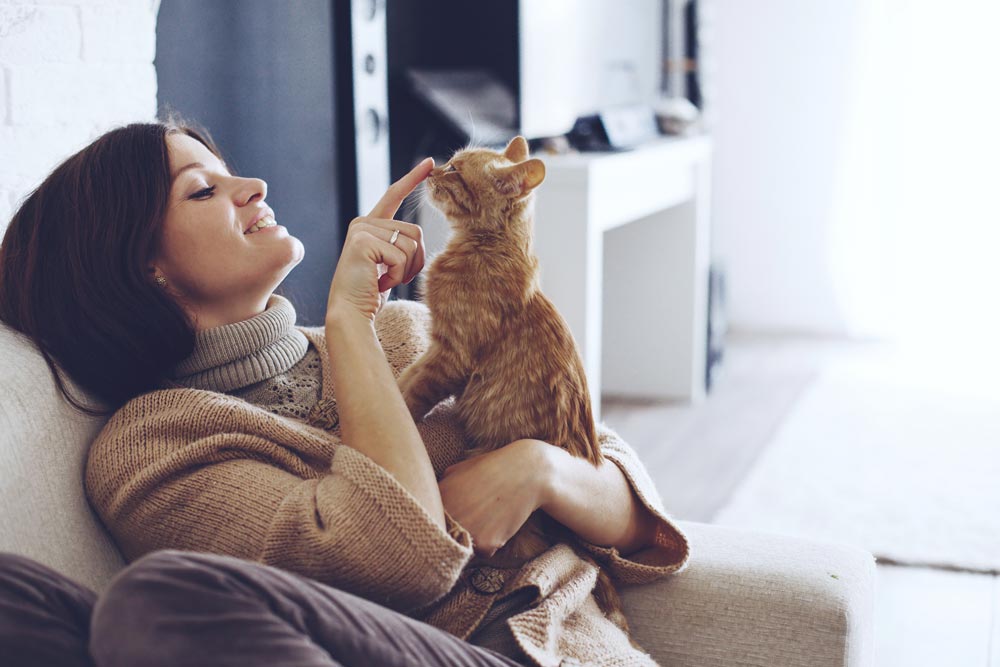How to Bond with Your Cat and Build a Strong Relationship
Cats are often perceived as independent creatures who prefer to keep to themselves. However, with the right approach, you can develop a strong bond with your feline friend and establish a relationship built on trust and love. Here are some tips on how to bond with your cat and build a strong relationship.
Creating a Safe and Comfortable Environment
The first step in bonding with your cat is to create a safe and comfortable environment for them. Make sure they have a cozy and warm space to retreat to, with a comfortable bed or blanket. Provide them with toys to play with and scratching posts to satisfy their natural instincts. Cats feel most secure in an environment where they have their own territory, so make sure they have an area of the house that is their own.
Grooming and Physical Contact
Grooming is not only essential for your cat’s health but also serves as a bonding activity. Regular brushing not only helps keep their coat clean and free of mats but also provides an opportunity for physical contact. Start with short grooming sessions and gradually increase the duration as your cat becomes more comfortable. Be gentle and make sure to use a brush that they enjoy. Additionally, gentle petting and stroking can help establish trust and strengthen your bond with your cat.
Playtime and Interactive Toys
One of the best ways to bond with your cat is through playtime. Cats have natural hunting instincts, and engaging in interactive play allows them to fulfill this innate behavior. Use toys that encourage them to chase, pounce, and jump. Wand toys with feathers or strings are particularly enticing for many cats. Schedule regular play sessions, making sure to vary the toys and movements, to keep them mentally and physically stimulated.
Understanding Cat Communication
To bond with your cat, it’s essential to understand their unique way of communication. Cats communicate through body language, vocalizations, and scent marking. Pay attention to their signals and respond accordingly. For example, if your cat approaches you with a relaxed body posture and a slow blink, it’s a sign of trust and contentment. On the other hand, a swishing tail or flattened ears may indicate discomfort or agitation. By being aware of their communication cues, you can respond appropriately and build trust with your cat.
Providing a Nutritious Diet
A healthy diet is fundamental to your cat’s overall well-being. Providing them with a nutritious and balanced diet will not only keep them physically healthy but also contribute to their emotional well-being. Consider feeding them high-quality cat food formulated for their age and specific needs. Regular feeding times and interactive food toys can also help create a positive association with mealtime.
Respecting Their Boundaries and Individuality
Just like humans, cats have different personalities and boundaries. It’s crucial to respect their individuality and not force them into interactions they are not comfortable with. Give your cat the space they need when they seek solitude or prefer not to be touched. Trying to force affection can lead to stress and damage the trust you have built. Allow your cat to come to you on their terms, and you’ll strengthen your connection over time.
Positive Reinforcement
Positive reinforcement is a powerful tool in building a strong relationship with your cat. Reward them with treats, praises, or gentle strokes when they exhibit behaviors you appreciate. This could be using the litter box, coming when called, or calmly approaching new situations. By associating these positive experiences with your presence, your cat will learn to trust and enjoy your company even more.
Patience and Time
Building a strong bond with your cat takes time and patience. Some cats may take longer to warm up to you, especially if they have had previous negative experiences. It’s essential to be patient and allow them to progress at their own pace. Avoid rushing interactions or overwhelming them with too much attention. Slowly but consistently invest time and effort into building a trusting relationship, and you’ll be rewarded with a deep bond with your furry companion.
In conclusion, bonding with your cat requires creating a safe environment, grooming and physical contact, playtime, understanding their communication, providing a nutritious diet, respecting their boundaries, positive reinforcement, and patience. By following these tips, you can forge a strong relationship with your feline friend based on love, trust, and mutual understanding.
Categorised in: Pet Relationships

